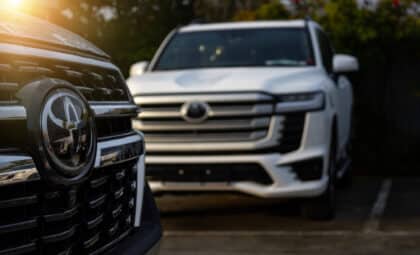
Photo: Pixabay
Upon leaving any airport in the United Kingdom, you see two signs: a welcome sign and a reminder to drive on the left.
Those of us from nations who drive on the right (or 66 percent of us) laugh at how silly the British are for going against the grain. But there’s a method behind the madness — and the method may be Roman.
The European road network
Evidence from ancient Roman road networks suggests the Romans drove on the left-hand side, a practice they also seem to export across the further reaches of the empire.
Why did they drive on the left? It’s hard to tell. One theory suggests that because being right-handed is a dominant trait, it was easier to drive a chariot down the left so that you might wield a sword defensively with your right. However, there’s no textual evidence to support this, but it does make logical sense, as you’ll learn later.
What about more recent customs?
Until very recently, there was no need to designate an official side of the road. Carts and horses were light and moved at reasonable speeds, so there was no need for yellow lines to keep everyone in their lanes.
At the same time, the European love of law took over in the 18th century. In Britain, the government deemed the left-hand side the official side of the road in 1773 and again in 1835.
However, France chose the opposite side, favoring the right, presumably because Napoleon was left-handed.
These laws are why so many former British colonies and Commonwealth members (76 countries in total) drive on the left — with two very obvious exceptions.
Why North Americans drive on the right
Weren’t the United States and Canada former British colonies? Indeed, they were, but their rejection of the left-hand drive is less an act of rebellion (though there was some nose-thumbing) and more a long series of historic consequences.
At the same time that the 18th-century British parliament deemed the left-hand side the appropriate side to ride on, the Americans chose the right. It wasn’t an official decision. Instead, Americans on their expansion used teams of horses to pull freight vehicles and stagecoach trains. The carts didn’t have seats, so the operators would sit on the left rear horse to use their right hand to control the team of horses.
Allegedly, traffic moved to the right organically to make it easier to pass each other on the roads.
Regardless, the decision was final by 1792. When Pennsylvania began building its turnpike, it required drivers to use the right lane. New York then also made the command. By the Civil War, everyone rode on the right.
Then, there was Henry Ford. When he produced the Model T, he created the first of a tradition of left-hand cars to drive on the right.
All the while, the Canadians were still using the left-hand side of the road, as was their custom under British rule. However, by the 1920s, there were so many cars on the road that Canada switched to the same side of the road as the United States. The goal was to better facilitate traffic, and it worked.
It’s actually safer to drive on the left
From the time of the horse and carriage to the automobile, it has always been easier to drive on the left.
Most people find it easier to mount a horse on the left. It was also simpler to walk on the edge of the road to lead horses, which was less likely to be a muddy swamp.
Driving a car on the left is also supposed to be safer (for right-handed drivers). The driver sits in the center of the road, and in a left-hand driving country, their seat is on the right of the vehicle. As a result, your right eye (usually the stronger eye) sits in the center of the car, which makes it easier to cope with oncoming traffic. If you’re right-handed, it also means your dominant hand stays on the wheel while you change gears (if you drive a manual transmission) or plays with the radio.
LHD vs. RHD: Some countries are still deciding
You might think all this got settled when cars became prevalent in the early 20th century. If so, you’re wrong.
Countries are still switching sides — each for their own reasons.
In 1967, Sweden spent millions switching from the left to the right-hand side of the road. Even though a popular referendum failed (with 83 percent dissenting) in 1955, Sweden’s neighbors had already made the leap. It was chaos, or as Time Magainze described it as “a brief but monumental traffic jam.”
Back in 2009, Samoa was the first country since the 1970s to change sides. They switched to the left to import cheaper cars. It had been importing left-hand drive imports from America, which were expensive. Driving on the left meant Samoans could import affordable right-hand drive vehicles from New Zealand and Australia.
Do you prefer an LHD vs. RHD vehicle? Or are your preferences the other way around? Sound off in the comments below.
This is a collaborative article.
The News Wheel is a digital auto magazine providing readers with a fresh perspective on the latest car news. We’re located in the heart of America (Dayton, Ohio) and our goal is to deliver an entertaining and informative perspective on what’s trending in the automotive world. See more articles from The News Wheel.










